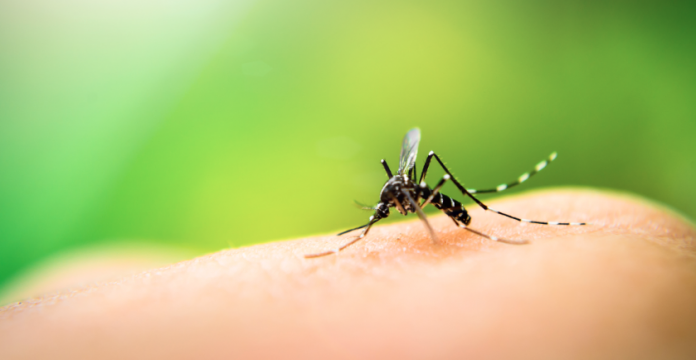
It’s finally warming up outside, which means playing outside, family vacations, and… mosquitos. Yep, bug season is in full swing. If you have trouble figuring out what insect repellents are best for keeping bug bites at bay for your family, you’re not alone.
Made Safe’s Bug Repellent: What’s In It? report finally gives you the answers you need. We looked at common active ingredients in conventional insect repellent and how they impact our health and the environment, as well as more natural options. Here’s the scoop:
Insect repellents are made up of two types of ingredients.
- Active ingredient are the active repelling chemicals and must appear on the label
- Inert ingredients, which are everything else in the products and can be all kinds of things from solvents and preservatives to anti-caking or foaming agents and fragrance, and are not listed on the label.
Some common active ingredients are chemicals of concern.
- DEET: linked to skin irritation, neurotoxicity, and shown to cross the placenta. Shows up in groundwater, surface water, and drinking water.
- Cyfluthrin: linked to neurotoxicity, and harmful to aquatic invertebrates, fish, and honeybees.
- Permethrin: linked to neurotoxicity, and harmful to aquatic invertebrates, fish, and honeybees.
- Pyrethroids: a class of chemicals linked to neurotoxicty; some have been linked to endocrine disruption; some have been classified as possible carcinogens.
Read more on chemicals of concern in bug repellent.
Some plants have pharmacological and biological properties that make plant extracts effective insect repellent, including:
- citronella
- clove oil
- geraniol
- lemongrass
- lemon eucalyptus
- linalool
- neem
- thyme
Read more on plant-based alternatives and other tips to keep bugs at bay.
MADE SAFE has certified the first-ever bug repellent made entirely with safe ingredients: Kosmatology Bug Repellent Balm* is made with a mixture of herbs, essential oils, and coconut oil. And for soothing your kiddos’ bug bites, we recommend Oilogic Bug Bites & Itches Essential Oil Roll-On, which is also MADE SAFE certified.
Find more MADE SAFE certified products.
Remember to choose the repellent that’s right for your family’s needs.
Knowing your area and if you are at risk for a mosquito-borne or tick-borne illness can help you make the right bug repellent choice for you and your family. Go to Consumer Reports’ Guide to Mosquito and Tick Diseases for information for your area.
With the rise of Zika virus and concern for other mosquito-borne diseases, Made Safe recognizes there is a time and place for the use of bug repellant products that would not pass our screening process. We urge people to become informed and stay on top of advice from the Centers for Disease Control (CDC) and the World Health Organization (WHO).
*MADE SAFE does not test for efficacy. We examine ingredients for human health and environmental harm and we don’t permit pesticides. This means that any approved products are taking a natural approach to bug repellant which may work for casual settings to diminish bites, but it cannot prevent diseases; there may be situations in which you prefer conventional bug repellent.




